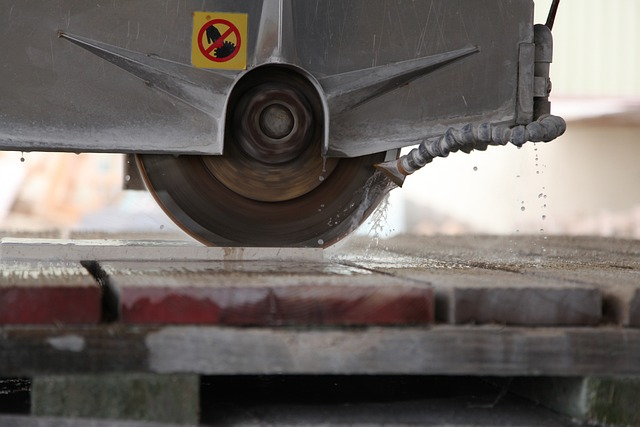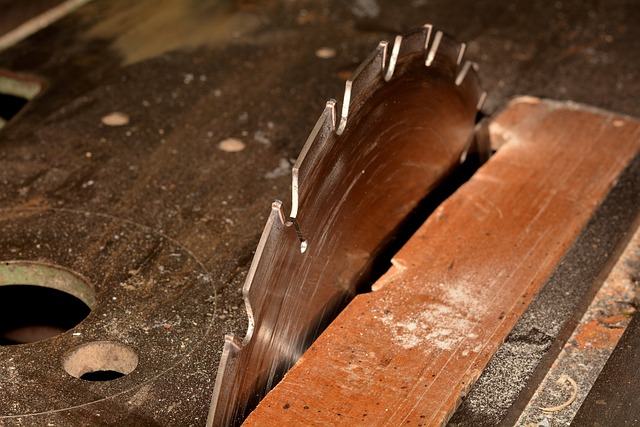

Choosing the right saw blade is essential to getting a clean, professional finish on a project. In this blog, we’ll look at the different factors that go into choosing the right blade for the job.
How do you choose the right saw blade?
Choosing the right saw blade comes down to the following factors; the type of saw used, the material being cut and the desired finish the project requires. Different features, such as the blade diameter, number of teeth, sawblade material and other aspects of a blade make a significant different in performance.
This blog will discuss general purpose blades designed to cut a variety of materials, to specialty blades: specifically blades designed to cut through metal.

What is the difference between cold cut blades and abrasive blades?

Cold Cut Saw Blades
Cold cut saw blades are a type of specialty blades used to cut through metal stock. Typically, these blades are manufactured from high-strength steel with tooth placement and angles designed to minimize the amount of heat generation during the cut. These blades tend to produce less sparks as well as a reduced amount of heat.
This design prevents the blade from overheating, reducing the risk of distortion or warping of the metal being cut. Unlike other blades, the metal stock is cool to the touch after cutting. This type of specialist saw blade is generally used in industries which require powerful and highly precise cuts, such as the aerospace and automotive sectors.
Take a look at our range of metal cutting saw blades here.
Abrasive Blades
Abrasive saw blades are designed to cut through materials using a specialist abrasive-coated cutting edge which grinds against the target surface, cutting through it. This type of blade is designed to quickly cut through a variety of softer materials and non-ferrous metals, including aluminium, brass and plastic. Generally abrasive wheels therefore function best when used on lower-tensile, less hard metals, not hard metals and alloys.
These blades generate more sparks and heat than their cold-cut equivalent, but they are more cost-effective, making them a popular choice in smaller-scale operations looking for a general purpose blade. These blades can often be found on construction sites and in the manufacturing industry.

What are the key parts of a metal cutting saw blade?
A metal cutting saw blade typically consists of several key parts, including the blade itself, the teeth, the gullets, and the shank. The blade is the main body of the saw and is generally manufactured from high-strength steel.
The teeth are the cutting edges of the blade and are spaced evenly along the edge of the blade, with the tooth configuration playing a key role in the blade’s performance. The gullets are the spaces between each blade tooth, helping to clear debris and provide optimal chip removal.
The shank is the part of the blade that attaches to the saw, and it is typically either round or hexagonal in shape. Some saw blades are also manufactured with a heat-resistant coating to help prevent the blade from overheating during use.
The Teeth
The number of blade teeth can affect the cut in several ways. A higher tooth count means the blade will produce a smoother, finer cut, but it will also require more power from the saw and can generate more heat. In contrast, a blade with fewer teeth will remove material more quickly, but it will also generally leave a rougher finish. Therefore, a blade with fewer teeth is better for making rough cuts, whilst a blade with more teeth is more suited to making precise cuts. It’s important to choose the right blade for your project and your saw in order to achieve the desired result.

What are the different types of power saws?
There are many different types of saws available, and the type of saw that you need will depend on the specific material you are cutting and the desired finish of the cut. Some common types of saws include hand saws, circular saws, reciprocating saws, band saws, and jigsaws. Hand saws are manual tools that are operated by hand and are generally used for cutting wood, though metal cutting options are also available.
Circular saws are power tools that use a circular blade to make straight cuts in wood or other materials. Reciprocating saws use a straight blade that moves back and forth, similarly to a knife, to make cuts in wood or other materials.
Band saws use a continuous loop of blade to make curved cuts in wood or other materials. Jigsaws use a small, reciprocating blade to make intricate cuts in wood or other materials.
At ToolFit, we stock a range of different power saws, including the Rotabroach Element 14 – ideal for making quick cuts in a variety of different metals.
Let’s take a look at these saws in more detail:
What is a jigsaw?
A jigsaw is a type of saw that is commonly used for making intricate cuts in wood or other materials. A jigsaw has a small, reciprocating blade that moves up and down rapidly to cut through the material. The blade is held in place by a guide, which allows the user to control the direction of the cut and keep the blade on track. Jigsaws are often used for cutting curves or other complex shapes, and they are also useful for making cuts in tight spaces or in materials that are difficult to cut with other types of saws. Jigsaws are available in both corded and cordless versions, and they can be used with a variety of blade types to suit different materials and applications.
What is a circular saw?
A circular saw is a type of power saw that is commonly used in woodworking and construction. It is called a circular saw because it uses a circular blade to make cuts in wood or other materials. The blade is mounted on an arbor, which is a shaft that extends from the motor of the saw. As the motor rotates the arbor, the blade spins at high speed and cuts through the material being worked on. Circular saws are available in a wide range of sizes and power levels, and they can be used to make straight cuts, curved cuts, or even angled cuts, depending on the specific type of blade and the settings on the saw. They are often used to make rough cuts in large pieces of wood or other materials, and they can commonly be found on construction sites to cut lumber or other building materials. When used with the right circular saw blade, they are also ideal for cutting a range of metal stock, including higher material thickness.
What is a handsaw?
A hand saw is a type of saw that is operated by hand, without the use of any power tools. Hand saws are typically used for cutting wood or other materials, and they come in a wide range of sizes and styles to suit different applications. Most hand saws have a narrow, flexible blade that is held in place by a handle at one end and a handle at the other end. The blade is usually held in a straight or slightly curved orientation, depending on the type of saw and the desired cut. Hand saws are typically used for making rough cuts or for cutting materials that cannot be easily cut with a power saw. They are also often used for cutting curves or other intricate shapes.
What is a reciprocating saw?
A reciprocating saw is a type of power saw that is commonly used for cutting wood or other materials. It is called a reciprocating saw because it uses a straight blade that moves back and forth, like a knife, to make cuts in the material. The blade is held in place by a guide, which allows the user to control the direction of the cut and keep the blade on track. Reciprocating saws are often used for making cuts in tight spaces or in materials that are difficult to cut with other types of saws. They are also commonly used for demolition work, as they can easily cut through nails or other fasteners that are holding together wood or other materials. Reciprocating saws are available in both corded and cordless versions, and they can be used with a variety of blade types to suit different materials and applications.
What is a band saw?
A band saw is a type of saw that uses a continuous loop of blade to make cuts in wood or other materials. The blade is typically made of high-strength steel and is mounted on two or more wheels, which are driven by a motor to rotate the blade at high speed. The material being cut is placed against a guide, which keeps the blade on track and allows the user to control the direction of the cut. Because the blade is continuous, band saws are able to make very smooth, curved cuts in wood or other materials. They are often used for cutting intricate shapes or for making curved cuts in large pieces of wood. Band saws are available in a range of sizes and blade widths to suit different materials and applications.
What is a miter saw?
A miter saw is a type of saw that is used for making precise crosscuts at a variety of angles. A miter saw has a circular blade that is mounted on a pivoting arm and can be rotated to make angled cuts. The saw is typically mounted on a bench or stand and is used with a fence to guide the material being cut. Some miter saws can also make bevel cuts, which are angled cuts on the edge of a piece of material, as well as compound cuts, which are both angled and bevelled cuts.
No Related Posts